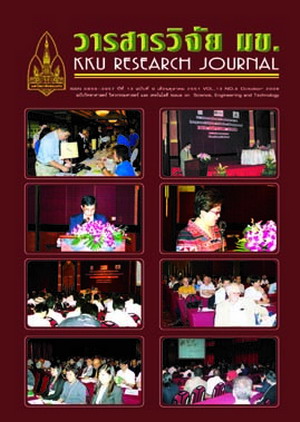Evaluation of SO2 deposition velocity and type of canopy resistance with Wesely parameterization model over a rice paddy in Thailand
Main Article Content
Abstract
A field measurement of SO2 deposition flux was carried out over a canopy of irrigated rice paddy in the tropical climate in Chachoengsao province, central Thailand. The experiment was observed, from July to December 2007 covering seasonal period of the rainy (Jul.-Sep.) and the winter (Nov.-Dec.) seasons. The SO2 deposition flux was determined by the Bowen ratio technique. Once the deposition flux was obtained, the deposition velocity of SO2 can be evaluated. The average values of SO2 deposition velocities in the rainy season were observed to be 0.37 cms-1 in daytime and 0.04cms-1 in nighttime. For the winter season, the deposition velocities were 0.68 cms-1 in daytime and 0.05 cms-1 in nighttime. The observed SO2 deposition velocity was compared with Wesely's parameterization model in order to determine the corresponding type of the canopy resistances for the tropical region. In both seasons, the observed canopy resistance is closer to transitional spring with partially green short annuals type as predicted by the Wesely model.
Article Details
How to Cite
Chimjan, O., & Khummongkol, P. (2017). Evaluation of SO2 deposition velocity and type of canopy resistance with Wesely parameterization model over a rice paddy in Thailand. Asia-Pacific Journal of Science and Technology, 13(9), 1075–1080. retrieved from https://so01.tci-thaijo.org/index.php/APST/article/view/83541
Section
Research Articles


